Dominique Luchart's Blog, page 573
July 8, 2021
The Windows update to fix ‘PrintNightmare’ made some printers stop working, Richard Lawler
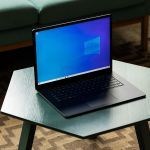
As if an actively exploited critical flaw in the Windows Print Spooler that can allow someone to take over your computer remotely isn’t bad enough, some people who installed Microsoft’s security patch found out that the connection to their printer stopped working. In a near-repeat of a problem that occurred this spring with a different Windows 10 security update, system admins discovered that many PCs suddenly couldn’t connect to printers — most notably several models of Zebra label printers — after installing the KB5004945 patch.
Microsoft has acknowledged the problem as a known issue that can be solved by rolling back the patch or reinstalling the printer as an administrator.
In a statement to The Verge, Zebra acknowledged the problem and said Microsoft plans to release an updated patch in the next couple of days that should address the issue.
We are aware of a printing issue caused by the July 6 Windows “KB5004945” update affecting multiple brands of printers. Microsoft has investigated this issue and plans to release an update addressing the issue within the next 1-2 business days. An immediate way to address the issue is to uninstall the Windows “KB5004945” update or uninstall the affected printer driver and reinstall using Administrative credentials. Long term, we encourage the use of the newer Windows update Microsoft is planning to release. Customers who need assistance regarding Zebra printers may contact our Technical Support Team.
The PrintNightmare issue is serious enough that Microsoft has already delivered patches for all affected versions of Windows that it still supports (Windows 7, 8.1 and several editions of Windows Server in addition to Windows 10). However, at least one security researcher has shown a working exploit on fully patched systems that have Point & Print features enabled, so if you don’t have a Zebra printer you should install the update ASAP.
The post The Windows update to fix ‘PrintNightmare’ made some printers stop working, Richard Lawler appeared first on NEWDAWN Blog.
Square is going to make a hardware wallet for bitcoin, Jay Peters

Square is going to make a hardware wallet for bitcoin, the company’s hardware lead, Jesse Dorogusker, announced on Thursday. CEO Jack Dorsey, who is also the CEO of Twitter, had said in June (in a tweetstorm, naturally) that the company was considering making one, and now Square has made the decision to move forward.
“We have decided to build a hardware wallet and service to make bitcoin custody more mainstream,” Dorogusker said. “We’ll continue to ask and answer questions in the open. This community’s response to our thread about this project has been awesome – encouraging, generous, collaborative, & inspiring.”
We’re doing it #Bitcoin https://t.co/IwbKuBoXGv
— jack (@jack)
Dorsey has made no secret of his interest in bitcoin. His Twitter bio only says “#bitcoin,” he showed off a bitcoin clock while testifying before Congress, and he has even said he’d be working on bitcoin if he wasn’t working at Square and Twitter. So it’s perhaps not surprising that more of Square’s efforts will be going toward a hardware wallet for the cryptocurrency.
This hardware wallet won’t be Square’s first cryptocurrency-focused product. You can already buy and sell bitcoin from Square’s Cash App.
The post Square is going to make a hardware wallet for bitcoin, Jay Peters appeared first on NEWDAWN Blog.
Here are the 7 biggest games from Sony’s State of Play event, Jay Peters
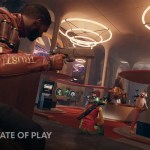
Sony showed off a lot of PlayStation games during its latest State of Play event, including more details about the remastered version of Death Stranding and an extended gameplay preview of PS5 exclusive Deathloop.
We’ve rounded up some information about seven of the biggest games from the event. And if you want to watch the State of Play in full, you can check it out right here.
Moss: Book II[embedded content]Sony debuted a trailer for Moss: Book II, which is in development for PSVR. The game is a sequel to 2018’s Moss, also a VR title.
Arcadegeddon[embedded content]Arcadegeddon is a new multiplayer shooter that hits early access Thursday on PS5. “This ever-evolving multiplayer shooter allows you to play solo or with up to three friends to explore multiple biomes, play mini-games, find hidden chests, and defeat numerous enemy types and boss levels,” according to a PlayStation blog post. The full game is set to launch in 2022.
Hunter’s Arena Legends Hunter’s Arena LegendsImage: Sony
Hunter’s Arena LegendsImage: SonyHunter’s Arena Legends is a new “one-of-a-kind melee battle royale” heading to PS4 and PS5. It’ll be out on August 3rd, and will be one of the free titles for PlayStation Plus members that month.
Jett: The Far Shore[embedded content]In this new game from the creators of Superbrothers: Sword & Sworcery EP, you’ll fly a plane (a “jett,” naturally) to explore all sorts of interesting-looking landscapes on a mysterious planet. Jett: The Far Shore is launching in 2021 for PS4 and PS5.
Lost Judgment [embedded content]Lost Judgment, a sequel to 2019’s Yakuza spinoff Judgment, got an action-packed trailer at Sony’s State of Play event. The game looks to be wildly varied — the trailer showed off wall-running, wall climbing, an investigation section, skateboarding, and even a dancing mini-game. It will be available on September 24th.
Death Stranding: Director’s Cut[embedded content]Sony showed off a new trailer of Death Stranding: Director’s Cut, a remastered version of Hideo Kojima’s enigmatic game. It’ll have improved melee combat, new weapons, a firing range to practice your skills, new story missions, and more. The game hits PS5 on September 24th.
Deathloop[embedded content]Bethesda debuted an extended look at Deathloop, its upcoming shooter that takes place in a time loop, including gameplay footage from a level in the game. Deathloop is set to launch exclusively on PS5 on September 14th, and you can read more about it in our preview from May.
The post Here are the 7 biggest games from Sony’s State of Play event, Jay Peters appeared first on NEWDAWN Blog.
Google Meet adds Duo-style filters, AR masks, and effects, Jon Porter

Google Meet is getting new video filters, effects, and augmented reality masks for personal calls on iOS and Android, the search giant has announced. They’re available via the sparkle icon at the bottom right of your video feed during a call, which brings up a carousel of different effects that include color filters and animated AR face effects. Most of the options are only available for personal Gmail accounts, while Workspace users have to keep things more professional with a limited selection of blurring and virtual background options.
The new video effects are the latest example of Meet’s shift from targeting enterprise and business users, to targeting consumers more generally after Google released Meet free to personal Google accounts last year. The filters are very similar to what’s already been available for Google’s consumer-focused Duo video chat service, and 9to5Google has previously reported that the company plans to eventually replace Duo with Meet.
Add cats, astronauts, jellyfish and more to your Meet calls. New filters, masks and effects are now available for Meet on Android and iOS. Try it today -> https://t.co/DDSvWFxDG8 pic.twitter.com/hylhsCcUuj
— Google (@Google)
If trying to make sense of all of Google’s messaging products is making your head hurt then don’t worry, you’re not alone. Thankfully, we might soon have one less Google service to keep track of.
The post Google Meet adds Duo-style filters, AR masks, and effects, Jon Porter appeared first on NEWDAWN Blog.
On This Day in Space! July 8, 2011: Space shuttle Atlantis launches on final mission, ,
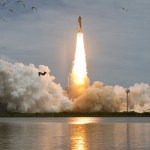
On July 8, 2011, the space shuttle Atlantis launched on its final mission.
Photos: Rare Last Look Inside Shuttle Atlantis
Atlantis was the last of NASA’s space shuttles to fly into space. It went on 33 missions since 1985, ferrying astronauts to and from space stations, and even doing some top-secret missions for the U.S. military. Mission STS-135 and its 4-member crew brought much-needed supplies and equipment to the International Space Station.
Atlantis landed for a final time on July 21, 2011. By the end of this final mission, Atlantis had traveled nearly 126,000,000 miles and orbited Earth 4,848 times.
Catch up on our entire “On This Day In Space” series on YouTube with this playlist.
[image error]
History of NASA: $22.99 at Magazines Direct
Discover the story of how and why NASA was created, its greatest triumphs, darkest days, and of the times it exceeded all possible hopes. A tale of adventure, heroism and resourcefulness, learn of the space agency’s greatest achievements and how — over six decades — the organization has consistently and tirelessly devoted itself to its founding principle: that “activities in space should be devoted to peaceful purposes for the benefit of all humankind”. View Deal
Still not enough space? Don’t forget to check out our Space Image of the Day, and on the weekends our Best Space Photos and Top Space News Stories of the week.
Email Hanneke Weitering at hweitering@space.com or follow her @hannekescience. Follow us @Spacedotcom and on Facebook.
Join our Space Forums to keep talking space on the latest missions, night sky and more! And if you have a news tip, correction or comment, let us know at: community@space.com.
The post On This Day in Space! July 8, 2011: Space shuttle Atlantis launches on final mission, , appeared first on NEWDAWN Blog.
DJI’s Pocket 2 4K vlogger cam now comes in white, Jon Porter

DJI’s latest handheld stabilized vlogging camera, the Pocket 2, is now available in white. The camera released last year only in black features a larger sensor and double the amount of microphones as its predecessor, the DJI Osmo Pocket. The new colorway follows a number of software updates DJI has made to the camera since its original release, with benefits including enhanced autofocus, support for HDR video, and better subject tracking.
The white Pocket 2 is available to buy now from DJI’s online store, where it’s currently listed at $439 as part of a bundle that includes a mini control stick, cover, handle, smartphone adaptors, power cable, wrist strap, and a sling strap. And yes, everything barring the power cable also comes in white.
 Accompanying accessories are also available in white.Image: DJI
Accompanying accessories are also available in white.Image: DJIAs well as a new color of the Pocket 2, DJI has also recently released a new firmware update for its Ronin S 2 camera gimbal. It adds new functionality for a host of Panasonic, Sony, Canon, and Leica as well as some bug fixes. Full release notes for the update are available here.
The post DJI’s Pocket 2 4K vlogger cam now comes in white, Jon Porter appeared first on NEWDAWN Blog.
China’s Chang’e 6 mission will collect lunar samples from the far side of the moon by 2024, ,

China is preparing a follow-up to its audacious Chang’e 5 lunar sample return mission by sending a similar spacecraft to collect material from the South Pole-Aitken (SPA) basin on the far side of the moon.
China launched Chang’e 5 in November last year and 23 days later recovered a return capsule containing samples of what could be the youngest lunar rocks so far collected. That mission’s backup, Chang’e 6, is now being prepared for an even more challenging sampling attempt on the far side of the moon in 2024.
Hu Hao, chief engineer of the China Lunar Exploration and Space Engineering Center, announced in a statement released on China’s national space day in April this year that the Chang’e 6 probe, consisting of an orbiter, lander, lunar ascent vehicle and reentry capsule, will target the South Pole-Aitken (SPA) basin.The SPA basin is a colossal, ancient impact crater roughly 1,550 miles (2,500 kilometers) in diameter that covers almost a quarter of the moon’s far side. The impact basin, considered to be the oldest on the moon, holds vital clues about the history of the moon and the solar system, according to a new report.
Related: China On the Moon! A History of Chinese Lunar Missions in Pictures
Previously, the U.S. National Academy of Sciences proposed a similar mission targeting the SPA basin as a priority research interest in its Vision and Voyages for Planetary Science in the Decade 2013-2022 report released in 2011.
China’s Chang’e 4 lander and the Yutu 2 rover made the first-ever landing on the far side of the moon in 2019 and they are currently exploring and returning data from the landing area in Von Karman crater, within the SPA basin.
But being able to analyze rocks from this area back on Earth would help determine the age of the giant impact basin and provide insight into the history of the formation of the moon and more.
Chinese authorities have not revealed the precise landing site within the.SPA basin, which extends from Aitken crater at 18 degrees south all the way down to the lunar South Pole and contains many large craters, such as Apollo, which could offer flat yet intriguing landing areas.
Related: Lunar timeline: humanity’s explorations of the moon
[image error]
China’s Chang’e 5 moon lander deployed a small fabric flag on Dec. 3, 2020. (Image credit: CNSA/CLEP)The Chang’e 6 mission will also carry a number of payloads from international partners. France will provide a detection instrument named DORN for studying the element radon and how it outgasses from the lunar regolith.
Italy’s National Institute of Nuclear Physics (INFN) will provide a laser retroreflector, an instrument used to bounce light back to its source, allowing scientists to measure the time taken for the journey and convert the information into an accurate distance. The Apollo 11, 14, and 15 missions all carried laser-ranging retroreflectors.
Other contributions have been preliminarily selected from Russia and Sweden, Hu Hao said in the statement. The joint China-Russia instrument will investigate the potential presence of surface water ice while the Swedish contribution would focus on detecting negative ions.
Chang’e 5 was China’s first lunar sample mission, following the Chang’e 1 and 2 orbiters and the landers and rovers of the Chang’e 3 and 4 missions. Chang’e 6 is being listed as an early part of a joint project with Russia to establish an International Lunar Research Station.
The far side of the moon never faces Earth, so Chang’e 6 will need the help of a relay satellite beyond the moon to communicate with the planet. This is because of tidal locking, which occurs when a planet’s gravity slows the rotation of a moon so much that it takes the same time for a moon to rotate as it does for it to orbit its planet. The Queqiao satellite has performed this relay role for Chang’e 4 and could also assist Chang’e 6.
Follow us on Twitter @Spacedotcom and on Facebook.
Join our Space Forums to keep talking space on the latest missions, night sky and more! And if you have a news tip, correction or comment, let us know at: community@space.com.
The post China’s Chang’e 6 mission will collect lunar samples from the far side of the moon by 2024, , appeared first on NEWDAWN Blog.
New measurement may resolve cosmological crisis, ,

A fundamental disagreement in the measurement of the universe’s expansion rate could be explained away, new data suggests.
In a new paper, a major player in this dilemma takes a look at the available information and concludes that the best observations might be pointing to a triumph for our standard picture of how the universe has grown over time.
Scientists know that the universe is expanding but have disagreed for a decade about just how fast this process is happening. Data that uses the cosmic microwave background (CMB), a leftover light from shortly after the Big Bang, has suggested that the value of the Hubble constant, which measures this expansion, should be about 46,200 mph per million light-years, or 67.4 kilometers per second per megaparsec in cosmologists’ units. (A megaparsec is equal to 3.26 million light-years.)
Related: Big Bang to present: Snapshots of our universe through time
Yet telescopes trained on stars in the nearby universe have instead come up with a Hubble constant measurement of 50,400 mph per million light-years (73.4 km/s/Mpc). The two numbers aren’t all that different, but each is quite precise and they can’t be reconciled with one another.
The tension between these two numbers has been an ongoing headache for researchers, with some invoking the idea that the discrepancy requires them to overturn their favored model of the universe, which explains how giant cosmic structures like galactic clusters have arisen and evolved since the dawn of time. Perhaps, researchers wondered, new physics beyond what we currently know could be used to bridge the gap.
“I think it’s a really interesting question: ‘Is there new physics beyond the standard cosmological model?'” Wendy Freedman, a cosmologist at the University of Chicago, told Live Science.
Freedman has spent much of her career observing what are known as Cepheid variable stars. These stars, which pulsate regularly, have a relationship between the period of the fluctuations in their light and their intrinsic brightness, meaning how bright they would be if we were standing right next to them. By knowing this intrinsic brightness and a Cepheid’s luminosity as seen from Earth, astronomers can calculate its distance from us and then measure the speed at which the universe is expanding at that point in space.
Cepheid data is one of the linchpins of the higher value of the Hubble constant, but Freedman and her collaborators have always wondered if perhaps they were making systematic errors in their observations. They have long searched for independent methods to corroborate or contest their results.
A few years ago, she and her colleagues found one method in the light of giant red stars. These objects, which represent a later life stage for stars with a mass similar to our sun, reach a specific peak brightness at a certain point in their evolution. Much like with the Cepheids, astronomers can look at how dim they appear from Earth to get a good estimate of their distance.
In 2019, Freedman and her team provided a number for the Hubble constant that sat just between the two other measurements: 47,300 mph per million light-years (69.8 km/s/Mpc). That result was calibrated using giant red stars in the Large Magellanic Cloud, a dwarf galaxy that orbits the Milky Way whose distance from us is relatively well determined.
Since then, the researchers have added more data points, calibrating the distance to giant red stars in three other galaxies and regions of space, which ups the precision of their Hubble constant measurements. These findings, which found essentially the same middle-ground estimate, appeared in a paper that was published to the preprint database arXiv on June 29, and which has been accepted for publication in the Astrophysical Journal.
“It’s landing in the same place, just shy of 70 [km/s/Mpc] with an uncertainty of just over 2%,” Freedman said of the new Hubble constant estimate from the red giant stars. “If we compare those results to the CMB, we wouldn’t say there’s an issue.”
These latest red giant measurements point to the possibility of systematic errors in the Cepheid observations, Freedman said. Obscuring dust and background light from the universe are some possible culprits, she added, though it will take time to actually discover if that is the case.
“I’m really impressed with the work and the details,” Simon Birrer, a cosmologist at Stanford University in California, who was not involved in the study, told Live Science. The paper really highlights the specific advantages of the red giant star observations, he added.
RELATED CONTENT
—18 biggest unsolved mysteries in physics
—11 fascinating facts about our Milky Way galaxy
—The 11 biggest unanswered questions about dark matter
But Birrer, who has been part of a team that looked at how massive galaxies warp light to provide another independent Hubble constant measurement, doesn’t think the saga is quite over yet. “Is this the beginning of the end of the tension? We’re still working on it,” he said.
Astronomers have now provided many different estimates of the universe’s expansion, some of which agree and some which don’t. Each team is striving for the best accuracy they can provide, Birrer said, and sorting out which might contain the ultimate answer is still unclear.
Freedman agreed, saying that she and her colleagues have recently been approved to use the upcoming James Webb Space Telescope to look at both Cepheids and red giants. Those observations should help clear up some of the remaining systematic uncertainties and hopefully get closer to the true value of the Hubble constant.
Originally published on Live Science.
The post New measurement may resolve cosmological crisis, , appeared first on NEWDAWN Blog.
Will Richard Branson actually reach space on Virgin Galactic’s 1st fully crewed launch?, ,
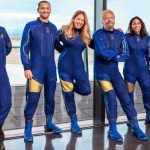
As the commercial race to suborbital space has heated up in the past few years, a tricky question has popped up again and again: Where does outer space begin?
This is not just a philosophical debate. It has real-world financial implications, because one space tourism company is selling seats on missions that may not reach the final frontier, depending on where you think the boundary lies.
That company is Virgin Galactic, which is set to launch Virgin Group founder Richard Branson and several other folks on a landmark test mission this Sunday (July 11) aboard the company’s VSS Unity space plane. Unity has reached suborbital space three times to date, most recently during a piloted test flight on May 22 — or has it?
Related: How Virgin Galactic’s SpaceShipTwo works (infographic)
Unity’s three spaceflights reached maximum altitudes of 51.4 miles, 55.9 miles and 55.4 miles (82.7, 89.9 and 89.2 kilometers, respectively). That’s high enough for those on board to earn their astronaut wings by the standards of NASA, the Federal Aviation Administration (FAA) and the U.S. military, which regard outer space to begin 50 miles (80 km) above Earth‘s surface.
But it’s below another widely recognized boundary — the Karman line, which is generally interpreted to lie at an altitude of 62 miles (100 km). And Virgin Galactic’s chief competitor in the suborbital tourism market, Jeff Bezos’ Blue Origin, has called attention to this fact, noting that its own New Shepard vehicle gets well above the Karman line.
Consider the statement that Blue Origin CEO Bob Smith emailed to The New York Times, which ran it in a July 1 story about Branson’s upcoming flight: “We wish him a great and safe flight, but they’re not flying above the Karman line, and it’s a very different experience.”
There’s some backstory to that statement. Blue Origin is gearing up for its own high-profile mission this month as well — the first crewed New Shepard flight, which will carry Bezos, his brother Mark, pioneering aviator Wally Funk and the person who paid $28 million for a seat via auction. (Blue Origin has not yet identified the auction winner.)
That New Shepard mission is scheduled to launch on July 20, the 52nd anniversary of the Apollo 11 moon landing. Blue Origin announced that target date in early May, nearly two months before Virgin Galactic unveiled its Branson-launching plans. (That big reveal came July 1).
Virgin Galactic and Branson deny that they’re trying to upstage Blue Origin, saying that Unity will fly on July 11 simply because it’s ready to do so.
During an interview with National Public Radio (NPR) that aired Wednesday (July 7), Branson addressed Smith’s Karman line remark, pointing out that NASA and the FAA recognize the 50-mile boundary.
In addition, “the actual difference in experience is going to be almost non-existent,” Branson told NPR’s Leila Fadel , noting that passengers will get roughly equal amounts of weightless time on Unity and New Shepard. Virgin Galactic has promised about 4 minutes of weightlessness on its flights.
The 50-mile line has other backers as well, including Jonathan McDowell, an astrophysicist and satellite tracker based at the Harvard-Smithsonian Center for Astrophysics, who made the case for its adoption in a 2018 paper.
In the middle of the last century, Hungarian-American physicist Theodore von Karman proposed that space begins where the forces of orbital dynamics exceed those of aerodynamics. Placing that line at 100 kilometers came more or less via “a rough order-of-magnitude argument,” McDowell wrote in the 2018 study. (After all, 100 km is much closer to the mark than 10 km or 1,000 km.)
But the actual boundary, by von Karman’s original definition, lies between 70 km and 90 km (43 to 56 miles), McDowell calculated. So, 80 km (50 miles) is a good approximation of this nebulous marker, especially considering that it represents a sort of point of no return for satellites. Spacecraft whose elliptical orbits take them lower than 80 km do not survive more than one additional loop around our planet, McDowell noted, whereas craft that stay just a few kilometers higher can remain aloft for days or weeks.
McDowell’s voice is influential among researchers and laypeople alike, and NASA, the FAA and the U.S. military are already on board. So are we on the way to a universal acceptance of 50 miles as the point where space begins? Or will the debate continue for years, with the two sides becoming ever more entrenched? Either way, it’ll be an interesting ride.
Mike Wall is the author of “ Out There ” (Grand Central Publishing, 2018; illustrated by Karl Tate), a book about the search for alien life. Follow him on Twitter @michaeldwall. Follow us on Twitter @Spacedotcom or Facebook.
The post Will Richard Branson actually reach space on Virgin Galactic’s 1st fully crewed launch?, , appeared first on NEWDAWN Blog.
Google feared Samsung Galaxy Store and tried to quash it, lawsuit alleges, Jon Porter
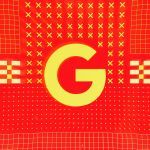
Google used anticompetitive practices in an attempt to “preemptively quash” Samsung’s Galaxy Store, and prevent it from becoming a viable competitor to its own Play Store. That’s according to an antitrust lawsuit filed by a coalition of three dozen state attorney general, which accuses Google of illegally attempting to control app distribution on Android. The suit also alleges Google paid off app developers to stop them circumventing its store.
The allegations challenge one of Google’s core defenses of its policies, which is that unlike Apple’s iOS rules, Android allows both competing app stores and side-loading apps directly. The lawsuit is effectively claiming that this openness is a facade, because while customers technically have the choice of where to get their apps from, Google’s business practices have prevented a viable app store competitor from emerging.
“Google felt deeply threatened when Samsung began to revamp its own app store, the Samsung Galaxy Store,” the suit says, and describes Google’s approach to the competing store as “a threat it needed to preemptively quash.”
The suit outlines a range of tactics Google allegedly used to prevent Samsung’s store from becoming a viable competitor. It claims Google used revenue share agreements with Android phone manufacturers that “outright prohibited” pre-installing some other app stores, and that it made “a direct attempt to pay Samsung to abandon relationships with top developers and scale back competition through the Samsung Galaxy Store.”
 The suit describes Google’s approach to Samsung’s store.Screenshot: Utah vs Google
The suit describes Google’s approach to Samsung’s store.Screenshot: Utah vs GoogleAs well as attempting to nullify Samsung’s store directly, the attorneys general claim that Google worked with app developers to encourage them not to distribute their apps outside of the Play Store, effectively paying them off while imposing restrictions about how they distribute their apps. In a heavily redacted section of the filing, the AGs argue that much of Google’s response came “as a direct consequence” of Epic Games choosing to distribute Fortnite outside of the Google Play Store. “To Google, competition in app distribution is a virus to be eliminated,” the suit says.
 Google’s response to Epic distributing Fortnite outside its app store.Screenshot: Utah vs Google
Google’s response to Epic distributing Fortnite outside its app store.Screenshot: Utah vs GoogleIn a blog post published shortly after the suit was filed, Google’s senior director of public policy Wilson White called it “a meritless lawsuit that ignores Android’s openness.”
“If you don’t find the app you’re looking for in Google Play, you can choose to download the app from a rival app store or directly from a developer’s website. We don’t impose the same restrictions as other mobile operating systems do,” White wrote, adding that manufacturers and carriers have the option of pre-installing other app stores and that “most” Android devices ship with “two or more app stores.”
Epic Games made similar allegations that Google has attempted to quash rival app distribution methods in its lawsuit against the search giant last year. It claimed Google forced OnePlus to abandon a deal to preload a special Fortnite launcher on its phones, and that it prevented LG from pre-installing the Epic Games app on its devices.
The post Google feared Samsung Galaxy Store and tried to quash it, lawsuit alleges, Jon Porter appeared first on NEWDAWN Blog.



